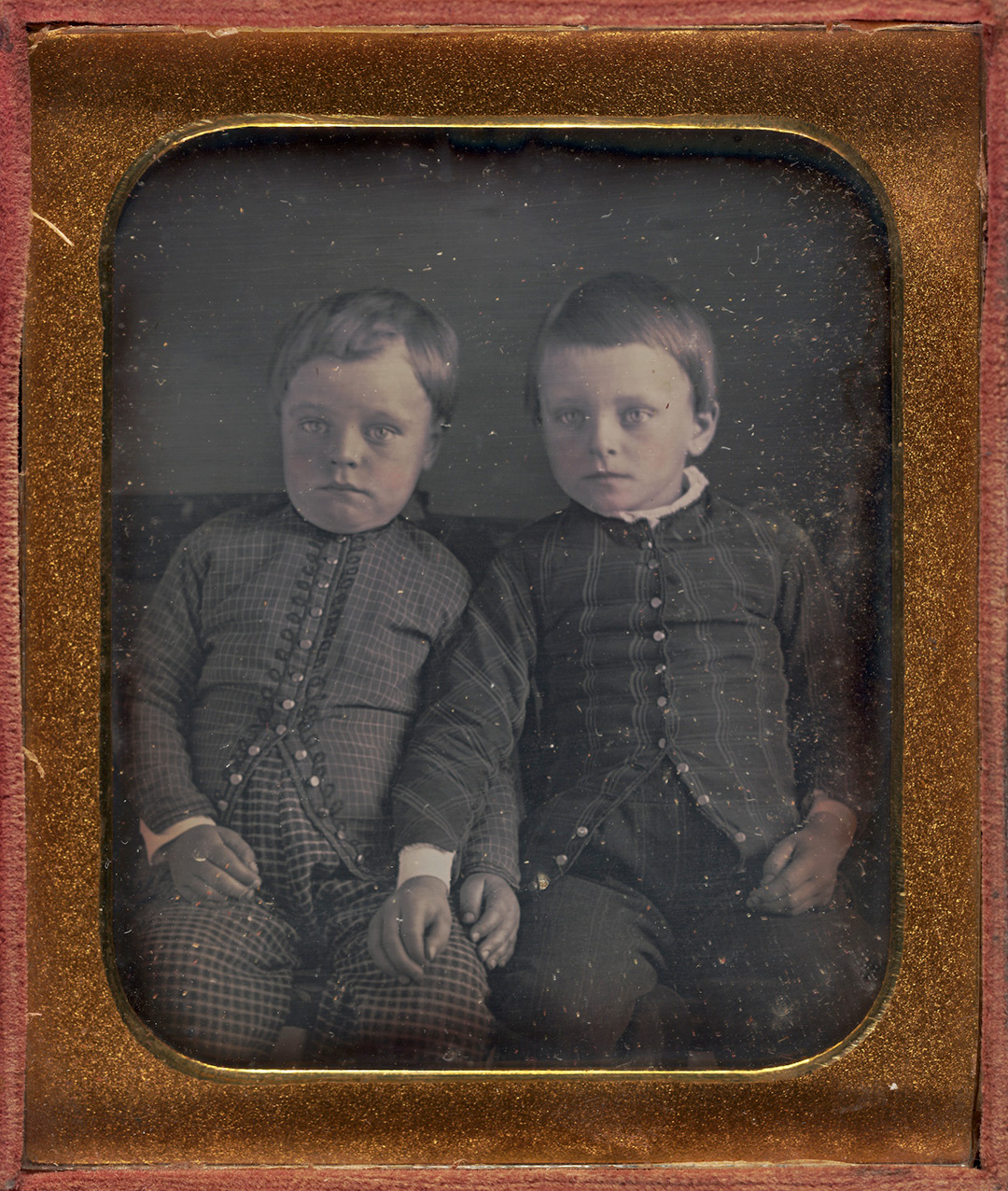The Crocker's photography collection illustrates the development of photographic processes over time, while also offering points of connection between viewers today and the challenges and successes of life across three centuries. Throughout the collection there is a focus on the human condition and the human experience, with many different photographers looking at the ways in which individuals interact with each other and with their environment.
Numbering roughly 1,300 works and growing, the Crocker’s photography collection includes a broad range of subject matter and photographic media. The oldest photographs are early daguerreotypes from the 1850s — the Crocker has 31 — and the most contemporary photographs date to 2018. The Museum also holds over 125 albumen prints, most of which are from the 1860s, and close to 900 gelatin silver prints!
How does this information fit into the larger history of photography? Over the course of photography’s development, artists worked with different materials and processes. The earliest camera obscura, Latin for “dark chamber,” was akin to a pinhole camera. When using the camera obscura, images were projected through a pinhole and inverted. In general, the same process was used in 20th-century slide projectors, in which slides were placed in a carousel tray upside down and backward. The slides would then appear right-side up and forward facing once projected.
Photographic processes changed quickly during the 19th century and became heavily dependent on the use of chemicals to develop images from negatives. At first, the negatives were heavy and fragile glass plates, but over time the process changed to metal plates, followed eventually by film negatives and the ability to mass produce a photograph. Three types of photographs, the daguerreotype, ambrotype, and tintype, all of which can be found in the Crocker’s permanent collection, provide insight into the complexity of the medium in its early stages of development.

American
artist,
Two Young Boys, n.d. Daguerreotype in leather case, 3 5/16 x 2
3/4 in. Crocker Art Museum, gift of Tom Vasey, 1978.12.66.
Collecting Daguerreotypes, Ambrotypes, and Tintypes
One tricky aspect of collecting daguerreotypes is that they can be difficult to tell apart from ambrotypes and tintypes largely because their ornamental cases can be deceiving. However, all three photograph types were made through unique processes with slightly different materials.

American artist, Four Girls, n.d. Tintype, 4 5/16 x 3 5/16 in. Crocker Art Museum, gift of Tom Vasey, 1978.12.48.
Tintypes roughly followed the same process for creation as ambrotypes but used a thin sheet of black-enameled iron that was coated with a collodion solution just before exposure. Tintypes were often created in the studios of photographers, where tourists and carnival visitors could sit in front of a pre-designed backdrop. Sturdier and less breakable than ambrotypes or daguerreotypes, tintypes did not require special or expensive cases. However, they often lacked the sharpness for which daguerreotypes are known. The 1860s and 1870s saw the biggest demand for the tintype. The Crocker has over 120 tintypes in the photography collection, most of which are portraits.
When distinguishing between the three types of early photographs—daguerreotypes, ambrotypes, and tintypes — the materials are the best place to start. Glass or metal? Glass indicates a daguerreotype or ambrotype while metal points toward a tintype. Does the image seem sharp and focused? If so, it is more likely to be a daguerreotype. White/gray images tend to be ambrotypes or tintypes. Is the surface reflective? If so, it’s more likely to be a daguerreotype.
Developing the Crocker Art Museum’s photography collection is an ongoing process, much like the development of the medium itself. The collection continues to grow both deeper, as new works by established artists and time-tested processes are added, and broader as contemporary/emerging artists and experimental forms are collected.
Stay tuned for more photography news as the Crocker’s permanent photography space rotates twice per year.
Top Image: American artist, Woman and Daughter, n.d. Ambrotype, 2 3/4 x 3 1/4 in. Crocker Art Museum, gift of Tom Vasey, 1978.12.55.
About the Author: Jayme Yahr, Ph.D., is Associate Curator at the Crocker Art Museum and a specialist in American art, with an emphasis on the late 19th and early 20th centuries. Yahr works extensively with the Museum’s photography, Native American, and American works on paper collections. For more about the new photography space see the recent blog Dust Bowl. Home. Land.


